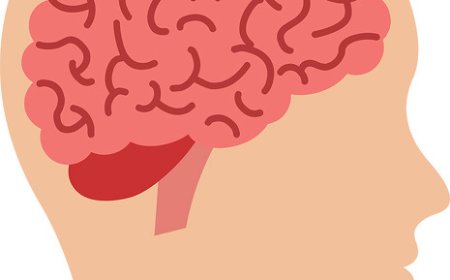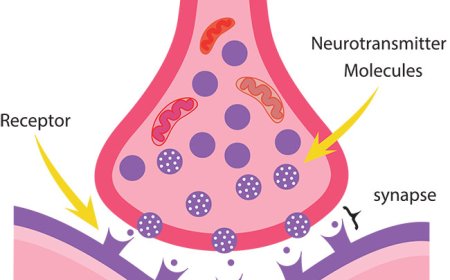Reflexes and Sensory Input: How Your Body Reacts and Senses the World
Learn how reflexes and senses work in this educational article for students aged 8–16. Discover how your body uses sight, sound, touch, and more to react and stay safe. Includes vocabulary, quiz, and a kid-friendly summary.
🧠👁️ Reflexes and Sensory Input: How Your Body Reacts and Senses the World
Every second, your body is busy collecting information about the world around you. You see, hear, smell, taste, and feel things—all without even trying. This amazing ability to gather information is called sensory input, and it helps your brain make sense of what’s happening around you. But sometimes, your body needs to act fast—so fast that it doesn’t even wait for the brain to decide what to do. That’s when reflexes kick in.
Reflexes and sensory input are both important parts of the nervous system. Sensory input helps you explore and enjoy the world, while reflexes help you survive and stay safe. Together, they show just how amazing your brain and body really are.
⚡ What Are Reflexes?
Reflexes are automatic, fast responses your body makes to keep you out of danger or to help you react quickly. These actions happen without your brain needing to think about it first. In fact, reflexes often happen before your brain even knows what’s going on. That’s because reflexes are controlled by your spinal cord, which can send and receive messages without needing permission from the brain.
Imagine this: you accidentally touch a hot stove. Before you even feel the pain or realize what’s happening, your hand jerks away. That quick movement is a reflex, and it may have saved you from getting badly burned. The spinal cord sent the signal from your hand to your muscles and back again in less than a second—all without the brain being involved at first.
Reflexes are not only about pain. Your body uses them all the time. Some examples include:
- Knee-jerk reflex – when a doctor taps your knee, and your leg kicks out
- Blinking when something comes near your eye
- Coughing when something tickles your throat
- Pulling away from sharp or painful objects
These reactions are designed to protect you and keep your body running smoothly, even when you don’t have time to think.
👁️ The Five Senses and Sensory Input
While reflexes act quickly, your senses gather information more carefully. The five senses—sight, hearing, touch, taste, and smell—send signals to your brain that help you understand the world.
Sight (Vision)
Your eyes let you see light, color, shapes, and motion. Light enters through the pupil, is focused by the lens, and hits the retina at the back of your eye. Special cells in the retina turn light into electrical signals that travel through the optic nerve to your brain. That’s how you see everything from books to sunsets.
Hearing (Auditory Input)
Your ears pick up sound waves in the air. These waves travel through the ear canal and vibrate the eardrum. Tiny bones inside your ear pass the vibrations to the cochlea, which sends signals to the brain through the auditory nerve. This helps you hear music, voices, and all the sounds around you.
Touch
Your skin is full of nerve endings that detect pressure, temperature, vibration, and pain. These signals tell you whether something is hot or cold, rough or smooth, soft or sharp. Touch helps you stay safe and connect with the world—like when you feel a hug or know to pull away from something too hot.
Taste
Taste buds on your tongue detect chemicals in food and drinks. They send messages to your brain about the five basic tastes: sweet, salty, sour, bitter, and umami (a savory flavor found in foods like cheese and soy sauce). Taste works closely with smell to create the full flavor of foods.
Smell
Inside your nose, special sensors pick up smells from the air. These are chemicals that float into your nostrils and are detected by olfactory receptors. Smell is closely linked to memory and emotion—you might notice how certain smells remind you of people, places, or holidays.
All of these senses work by turning physical things—light, sound, pressure, chemicals—into nerve signals. These signals are carried by sensory neurons to your brain, where they are interpreted and used to guide your actions, thoughts, and feelings.
🧠 How Reflexes and Senses Work Together
Even though reflexes and senses seem different, they often work together. For example, you might see a bug flying toward your eye. Your eyes send a message to your brain, but your body doesn’t wait—it blinks automatically to protect your eye. That’s a reflex triggered by a sense.
Another example: if you smell something burning, your nose sends a signal to your brain, which tells your muscles to move or check the oven. In this case, the brain is fully involved. But if you touched the hot stove, your reflex would take over before your brain had time to decide.
Together, reflexes and sensory input help you stay aware, respond quickly, and enjoy life. They are the nervous system’s way of keeping you connected to your body and the world around you.
🎉 Fun Facts About Reflexes and the Senses
- Babies are born with reflexes like sucking and grasping
- The average person blinks about 15–20 times per minute
- Your nose can detect over 1 trillion different smells
- Dogs have a stronger sense of smell than humans—but humans have better color vision
- Your skin is the largest sensory organ in your body
🧠 Vocabulary
- Reflex – A fast, automatic reaction that happens without thinking
- Sensory input – Information collected by the senses and sent to the brain
- Neuron – A nerve cell that carries messages through the body
- Sensory neuron – A neuron that carries signals from the senses to the brain
- Spinal cord – A bundle of nerves that helps the body and brain talk
- Olfactory – Related to the sense of smell
- Taste bud – A group of sensory cells on the tongue that detects flavors
- Auditory nerve – The nerve that carries sound messages to the brain
- Retina – The part of the eye that senses light and sends messages to the brain
- Cochlea – A spiral-shaped part of the inner ear that helps with hearing
✅ Quiz: Test Your Reflex and Senses Smarts!
1. What is a reflex?
Answer: A quick, automatic reaction that happens without thinking.
2. How many senses does your body use to collect information?
Answer: Five.
3. What part of your body helps you see light and color?
Answer: Your eyes (specifically, the retina and optic nerve).
4. What sends signals from your skin to your brain?
Answer: Sensory neurons.
5. What is the biggest sensory organ in your body?
Answer: The skin.
🧒 Kid-Friendly Summary
Reflexes are your body’s way of reacting super fast to keep you safe—like blinking or pulling away from something sharp. Your five senses help you explore and understand the world by sending messages to your brain about what you see, hear, smell, taste, and feel. Together, reflexes and senses help you live, learn, and stay safe every day!



















































